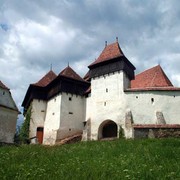Wolves are certainly among the most charismatic species, most totemic animal of all, symbol of wild nature, freedom and the most empathetic to man - considering the family relationship with the domestic dog. It is essential to protect, monitor, and preserve them, and to mitigate their impact on human activities.
In the early seventies, wolves in Italy were reduced to a few specimens confined in Central and Southern Italy; however, within 30 years, they have managed to re-colonize the Alps, where they had been missing for nearly a century, moving up through the narrow ecological corridor of the Liguria Apennines. In fact, in the mid-eighties, this species reappeared in the Ligurian Apennines, eliciting different and contrasting opinions and feelings. On the one hand, satisfaction for this newfound presence and the other, farmers' concern, hunters antagonism, and inland inhabitants' fear.
Wolves are of great ecological importance since their predator activities contribute to the control and regulation of animals in the ecosystem. They play a positive role also in relation to prey species, eliminating mainly old and sick ones, thus helping to maintain healthy prey populations. Its presence can also prevent overcrowding of some species, such as wild boar and other ungulates, which cause extensive damage to crops.
There are many techniques used by researchers to study the wolf's distribution, ecology and behavior. Given their crepuscular and nocturnal habits, and marked evasiveness towards man, observing wolves in the wild is a rare event; therefore we often resort to indirect methods such as searching tracks, which the wolf inevitably leaves as footprints, droppings, remains of food, etc.
The goal of the two trips organized by the Sport Association MY, is to delve into the wolf's world, to deepen the knowledge of the species in the region, with particular reference to the Ligurian Alps, and convey some basic technique for main signs' recognition of wolves' presence.
The first trip on November 22nd will explore the Mount Fronté area - within the Site of Community Importance (SCI) Mount Saccarello-Mount Frontè, in the heart of the Regional Natural Park of the Ligurian Alps – where a pack has been living permanently for years.
Participants to the trip on November 29th will learn more about the species in the Ligurian Alps' sector between Liguria and France, specifically the mountain group Toraggio-Pietravecchia-Grai-Marta, exploring the main routes used by wolves to move West.
Both trips are led by Matteo Serafini, who is not only a naturalist with a deep passion for wolves, but has also worked actively in the regional project "Wolves in Liguria" during the last five years. Having walked the length and breadth of Imperia and Savona districts looking for the predator, he has learned about every stone and corner of these areas and appreciated the western inland so much to decide to relocate permanently in Albenga from Milan. Interested in research, when hiking he tries to teach participants to recognize wolves' tracks and to interpret signs found on the ground. Field activities not only improve participants attention and interest in the topic but create helpers. In fact, Citizen Science is a new concept in the world of research, but increasingly utilized: it simply teaches people to become researchers themselves helping in the work, entering in a network that will improve the knowledge of the species in the region, an essential step for its conservation and conflict management.
For more information: Sport Association MY, +39 333 6853041 matteoserafini.lupoliguria@gmail.com











